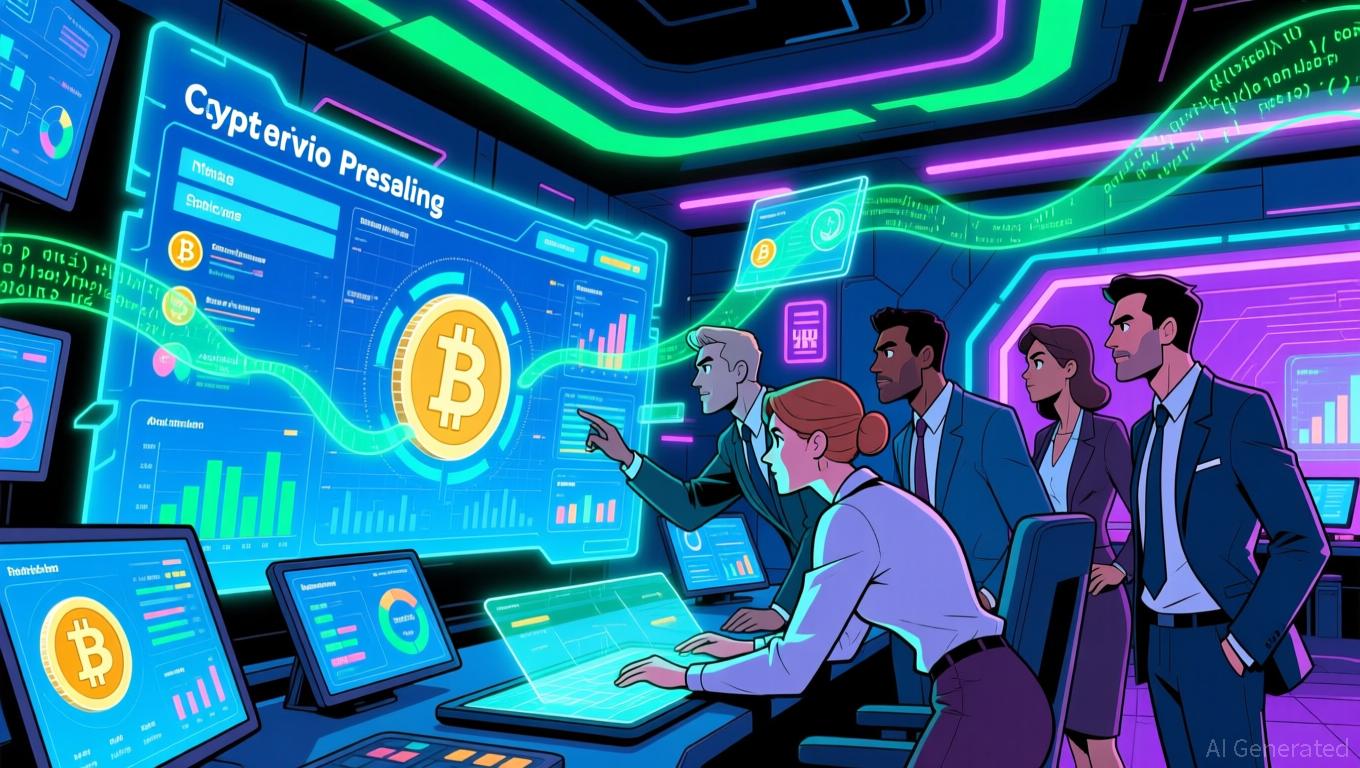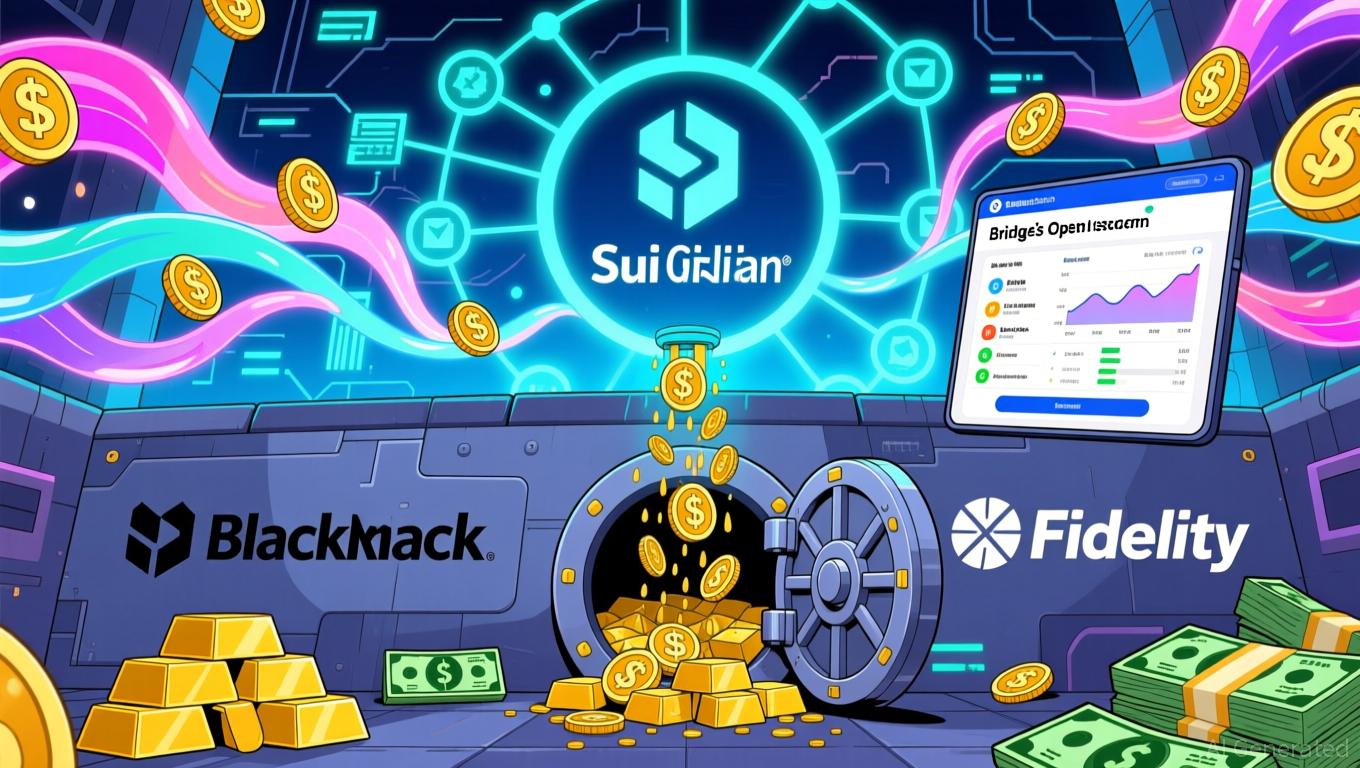Hyperliquid (HYPE) Price Fluctuations: Changing Market Sentiment During DeFi Liquidity Developments
- Hyperliquid (HYPE) faced 2025 liquidity crises from market manipulation and API outages. - November POPCAT spoofing caused $4.5M+ bad debt via leveraged position attacks. - July API outage exposed centralized infrastructure risks during $14.7B open interest. - TVL surged to $2.15B despite whale-driven volatility and anchoring bias effects. - Investors must balance DeFi innovation with systemic risks in fragile liquidity pools.
The decentralized finance (DeFi) industry has consistently faced the challenge of balancing rapid innovation with inherent instability. Hyperliquid (HYPE), a prominent decentralized perpetuals platform, has emerged as a key example for examining how abrupt liquidity disruptions and market manipulation can intensify price swings. Throughout 2025, HYPE's token experienced significant volatility, fueled by a series of notable incidents that revealed weaknesses in both the protocol's structure and market sentiment. This article explores the relationship between liquidity shocks, trader actions, and shifts in sentiment, providing guidance for investors navigating these unpredictable conditions.
The November 2025 POPCAT Incident: Spoofing and Leverage in Action
In November 2025, Hyperliquid encountered its third significant liquidity event of the year when a coordinated attack targeted the Solana-based
This event highlighted a major vulnerability in markets with high leverage and limited liquidity: bad actors can exploit thin order books and community-backed liquidation pools. Unlike typical hacks, this manipulation relied on precise timing and spoofing tactics, illustrating the tension between DeFi's decentralized ideals and its dependence on fragile systems.
The July 2025 API Failure: Infrastructure Weakness and Market Trust
Just a month prior, Hyperliquid faced a different setback. On July 29, 2025,
Although Hyperliquid's technical team quickly restored operations, the incident reignited concerns about the dangers of relying on centralized front-end infrastructure in DeFi.

Market Psychology: TVL, Whale Activity, and Cognitive Biases
Despite these setbacks, Hyperliquid's DeFi Total Value Locked (TVL) climbed to $2.15 billion by late 2025,
Psychological dynamics further intensify market swings. For example, anchoring bias causes whales to concentrate trades at certain price points, while the pursuit of high-risk rewards under leverage leads to bold trading during turbulent times. Analysts need to interpret these patterns carefully, as they can distort underlying market signals and mislead retail traders.
Takeaways for Investors: Managing Risk and Building Resilience
The recent volatility on Hyperliquid provides important insights for DeFi participants. First, liquidity disruptions—whether from manipulation or technical failures—can quickly undermine trust, even in platforms with substantial TVL. Second, volatility driven by large traders highlights the need to track on-chain movements and leverage levels. Lastly, how the platform addresses crises, such as
For HYPE, future success depends on tackling systemic vulnerabilities. Strengthening API reliability, improving detection of spoofing, and expanding liquidity pools could help prevent similar incidents. Still, investors should remain cautious about the DeFi sector's ongoing exposure to manipulation, especially in markets where retail enthusiasm exceeds institutional safeguards.
Disclaimer: The content of this article solely reflects the author's opinion and does not represent the platform in any capacity. This article is not intended to serve as a reference for making investment decisions.
You may also like
Bitcoin News Today: Top Institutional Funds Recognize Bitcoin ETFs as Essential Portfolio Holdings
- Harvard and Emory universities significantly increased Bitcoin ETF holdings, with Harvard's stake in BlackRock's IBIT reaching $442.8M (257% QoQ growth) and Emory's Grayscale Mini Trust position rising to $51.8M (245% increase). - Institutional adoption accelerates as Brown University joins with $13.8M in IBIT, while BlackRock's IBIT attracted $1.2B in inflows last month, capturing 35% of total Bitcoin ETF assets. - Analysts highlight Bitcoin's maturation as a strategic reserve asset, citing Harvard's $2

Bitcoin Updates: Conventional Markets Falter While AI-Driven Cryptocurrencies and Bitcoin Ignite Hopes for 100x Growth in 2025
- Blazpay’s AI-driven presale nears completion with $1. 3M raised, offering 25% returns by Phase 4 and $15,950 potential if token hits $0.05 by 2025. - Analysts highlight Blazpay’s gamified referral system and multichain liquidity as key differentiators in a selective 2025 crypto market. - Bitcoin’s institutional adoption gains traction as Strive Inc. holds 7,525 BTC post-PIPE financing, while Saylor and Trump-linked firms reaffirm bullish stances amid macroeconomic uncertainty. - Market volatility and str

SUI News Today: The Battle for Dominance in Stablecoins: Advancements and Oversight Compete for Supremacy
- Stripe's $1.1B acquisition of Bridge and Sui Foundation's USDsui stablecoin signal a strategic shift toward blockchain-native stablecoin infrastructure with custodial reserves. - U.S. GENIUS Act and BoE's 40% reserve requirements highlight regulatory tensions as stablecoin supply exceeds $260B and payment volumes reach $19.4B in 2025. - Sui's $1.38B TVL and Stripe's transaction dominance reflect growing institutional adoption, while Japan debates stablecoin risks to traditional banking systems. - Market

XRP News Update: XRP ETF Debuts Strongly Despite Bearish Death Cross and Fibonacci Support Breach
- XRP's first U.S. spot ETF launched Nov 13, 2025, with $248M assets but faces bearish technical signals including a death cross and Fibonacci breakdown. - Price fell to $2.26 from $3.6650 as analysts warn of potential drop to $1.7707, contrasting with ETF-driven institutional interest in Ripple's RLUSD stablecoin. - Egrag Crypto compares XRP's ETF trajectory to Bitcoin's 230% surge pattern, projecting $6.64 upside but cautioning regulatory differences limit historical parallels. - Mixed on-chain data show
